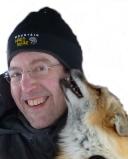Mating
Four Ways to Think About Behavior
Niko Tinbergen knew behavior could be studied at four levels.
Posted March 14, 2012
A colleague of mine who also studies evolution and behavior once told me that when a passenger next to him on a plane asks, "So, what do you do?" his reply is "Oh, me? I'm an organic chemist." End of conversation. Very few people have their own theories about organic chemistry. But almost everyone has their own theory on why humans and other animals behave the way they do.
Here, I'd like to highlight the way that animal behaviorists ask questions about behavior. Back in 1963, Niko Tinbergen, who would win a Noble Prize a decade later, wrote a classic paper entitled "On Aims and Methods in Ethology." Tinbergen distinguished among four different types of explanations when dealing with behavior: (1) proximate explanations, (2) developmental explanations, (3) natural selection explanations, and (4) phylogenetic explanations. Proximate explanations address the immediate mechanism that precipitated a particular behavior. Developmental explanations tell us how a behavior came about over the course of the organism's lifetime. Natural selection explanations describe how natural selection and other evolutionary processes interact to shape behavior—Tinbergen, quoting others, refers to this as "survival value explanations." Phylogenetic explanations look at a species' evolutionary history and explain where, in this evolutionary history, the behavior in question first appeared. As an example, let's look at a case study that uses evolutionary and phylogenetic approaches to study mating behavior, and in particular, monogamous versus polygynous behavior.
The family of birds known as Acrocephaline warblers includes species whose mating systems vary from monogamous to polygynous. In monogamous systems, monogamous males provide much more food to chicks than do polygynous males. Bernd Leisler and his teams used molecular genetic data to build a phylogeny of seventeen Acrocephaline warbler species. At the same time, they gathered together published data on habitat quality, parental care, and mating system (monogamous versus polygynous) in warblers.
Leisler found a strong correlation between mating system and habitat quality. Most monogamous systems were found in poor habitats, and most polygynous systems were found in better habitats. Males were much more likely to provide significant parental care to developing chicks in poor habitats, probably because that it takes two parents to gather up enough food to feed developing chicks. Here we see a natural selection explanation—habitat quality creates selection pressures that shape mating systems and parental care.
Leisler and his team's phylogenetic analysis also examined which type of mating system—monogamy with male parental care or polygamy with reduced male parental care—came first. This analysis found that in Acrocephaline warblers, a monogamous system, in which males displayed parental care and the birds lived in poor habitats, was the ancestral (original) state of the system. Polygynous systems with reduced care evolved from this ancestral state.
Now we can combine the natural selection and phylogenetic explanations to paint the following picture: in warblers, it appears that, through evolutionary time, some species began inhabiting better-quality habitats. Once this occurred, and it was possible for chicks to receive enough food from a single parent, males were freed from parental care duties and the evolution of polygyny was facilitated.
There are literally thousands of studies in animal behavior that look at one, two, three or even all four explanations suggested by Tinbergen. I may talk about a few dozen the next time a passenger sitting next to me on the plane asks, "So, what do you do?"
===
My latest book is The Prince of Evolution: Peter Kropotkin's Adventures in Science and Politics, only $9.99 (softcover) or $3.99 (Kindle) at Amazon, http://amzn.to/ukbYPd
Speaking engagements: I have had the opportunity to speak about my work on both the evolution of social behavior and the history of science at hundreds of venues, including 70+ universities, The Smithsonian Institute, The American Museum of Natural History, Colonial Williamsburg, Poptech! and The Idea Festival. You can see more about my prior and upcoming speaking engagements at:http://louisville.edu/faculty/laduga01. I love visiting with interesting groups of people, hearing about their work, and talking about my own research. Unlike a number of my colleagues, I do not charge exorbitant speakers fees.
Further Reading
Leisler, B., H. Winkler, and M. Wink. 2002. Evolution of breeding systems in acrocephaline warblers. Auk 119:379-390.
Tinbergen, N. 1963. On aims and methods of ethology. Z. Tierpsychol. 20:410-440.
Image credit: http://bit.ly/wV7m1E


